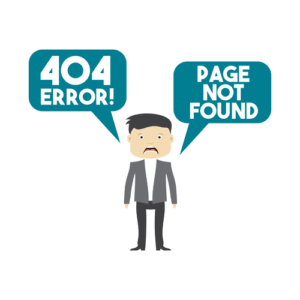Depreciation Tax Shield Depreciation Tax Shield in Capital Budgeting

In general, a tax shield is anything that reduces the taxable income for personal taxation or corporate taxation. Depreciation is considered a tax shield because depreciation expense reduces the company’s taxable income. When a company purchased a tangible asset, they are able to depreciation the cost of the asset over the useful life. Each year, this results in some amount of depreciation expense for tax purposes. Anyone planning to use the depreciation tax shield should consider the use of accelerated depreciation.
How Tax Shields Work
- You will need to know your individual tax rate as well as the amount of all your tax-deductible expenses.
- Depending on the taxpayer’s total rate and cash flows for the specific year, tax shields differ from nation to nation and have different benefits.
- Other factors, such as the length of ownership of the item and whether it was used to construct capital improvements, may impact the potential for depreciation to be deducted.
- They can take different forms, such as deductible expenses, tax credits, or depreciation allowances.
- It’s calculated by multiplying the depreciation expense by the tax rate.
For example, if a company has an annual depreciation of $2,000 and the rate of tax is set at 10%, the tax savings for the period is $200. So, for instance, if you have $1,000 in mortgage interest and your tax rate is 24%, your tax shield will be $240. The recognition of depreciation causes a reduction to the pre-tax income (or depreciation tax shield formula earnings before taxes, “EBT”) for each period, thereby effectively creating a tax benefit. Under U.S. GAAP, depreciation reduces the book value of a company’s property, plant, and equipment (PP&E) over its estimated useful life. The Depreciation Tax Shield refers to the tax savings caused from recording depreciation expense.
Business Costs

Since the interest expense on debt is tax-deductible (while dividend payments on equity shares are not) it makes debt funding that much cheaper. A Tax Shield is an allowable deduction from taxable income that results in a reduction of taxes owed. Tax shields differ between countries and are based on what deductions are eligible versus ineligible. The value of these shields depends on the effective tax rate for the corporation or individual (being subject to a higher rate increases the value of the deductions). A tax shield in capital budgeting is a way for corporations to strategically plan their optimal capital structure and decide which investments to follow.
Want To Learn More About Finance?
- Both intangible assets like patents and tangible assets like buildings are eligible for the deduction.
- Giving to charitable organizations can shield you from a hefty sum of income taxes.
- Depreciation is a non-cash expense; hence, the net operating cash flows can be increased with proper planning, and better funds management will be done.
- The cost of the machinery is $50,000, and it has an expected useful life of 10 years.
- A Tax Shield is an allowable deduction from taxable income that results in a reduction of taxes owed.
- Also, at higher tax rates, Depreciation is going to provide additional savings.
By using accelerated depreciation, a taxpayer can defer the recognition of taxable income until later years, thereby deferring the payment of income taxes to the government. Tax shields are essentially tools used to protect income from being taxable. They can take different forms, such as deductible expenses, tax credits, or depreciation allowances. By minimizing taxable income, individuals and businesses can increase their after-tax cash flow, allowing for reinvestment, debt reduction, or simply saving for future goals. A tax shield is a financial strategy that allows businesses or individuals to reduce their taxable income, resulting in a lower tax liability.
Understanding XRP’s Role in the Future of Money Transfers
You’ll have to itemize your deductions to deduct mortgage interest from your taxes. If you obtained a mortgage before December 17, 2017, you can deduct up to $1,000,000 of interest. Mortgages originating after that date are eligible for an interest deduction of up to $750,000. The use of a depreciation tax shield is most applicable in asset-intensive https://www.bookstime.com/articles/percentage-of-completion-method industries, where there are large amounts of fixed assets that can be depreciated. Conversely, a services business may have few (if any) fixed assets, and so will not have a material amount of depreciation to employ as a tax shield. A U.S. corporation may deduct the interest expenditure related to bonds payable from its taxable income.

When EBT falls down to zero or negative, the firm doesn’t pay anything in that situation. Sandra Habiger is a Chartered Professional Accountant with a Bachelor’s Degree in Business Administration from the University of Washington. Sandra’s areas of focus include advising real estate agents, brokers, and investors. She supports small businesses in growing to their first six figures and beyond.
These deductions reduce a taxpayer’s taxable income for a given year or defer income taxes into future years. Tax shields lower the overall amount of taxes owed by an individual taxpayer or a business. Both individuals and corporations are eligible to use a tax shield to reduce their taxable income. This happens through claiming deductions such as medical expenses, mortgage interest, charitable donations, depreciation, and amortization. Taxpayers can either reduce their taxable income for a specific year or choose to defer their income taxes to some point in the future.
How to Calculate Depreciation Tax Shield?
In other words, a prosperous firm will be able to deduct interest expenses from its income tax bill. For some calculations, such as free cash flow, putting back a tax shield can not be as straightforward as just adding the entire tax shield’s worth. Instead, add the interest of expenditure cost and multiply it by (1 – tax rate). Common expenses that are deductible include depreciation, amortization, mortgage payments, and interest expense.